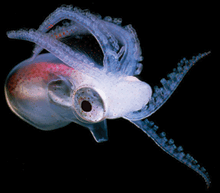 Our proposed experiments involve capturing DNA molecules at the different stages of natural transformation. One of the technical challenges we face will be producing a library of DNA molecules that have been translocated into the cytosol. We have some schemes for how we’ll do the purification of donor DNA from the cytosol, but even assuming that this works wonderfully, we still need to turn these into double-stranded DNA. We can’t use a specific primer to the 3’ends of translocated ssDNAs, because (a) we don’t know the exact 3’ ends and (b) it will be a complex mixture.
Our proposed experiments involve capturing DNA molecules at the different stages of natural transformation. One of the technical challenges we face will be producing a library of DNA molecules that have been translocated into the cytosol. We have some schemes for how we’ll do the purification of donor DNA from the cytosol, but even assuming that this works wonderfully, we still need to turn these into double-stranded DNA. We can’t use a specific primer to the 3’ends of translocated ssDNAs, because (a) we don’t know the exact 3’ ends and (b) it will be a complex mixture.What to do?
Until now the only thing that had occurred to me is to use random priming of our ssDNA to convert cytosolic ssDNA into dsDNA (shown schematically above), but this approach has several limitations. The biggest problem is that we would only be able to accurately identify the 5’-end of translocated DNA. The 3’-end of the final dsDNA we produce would not represent the 3’-ends of the original ssDNA molecules using random primers. Furthermore, we would not know which end of our dsDNA was the original ssDNA’s 5’ or 3’ end. And finally, we would end up with a highly heterogeneous size distribution, which might complicate sequencing.
How can I circumvent this, get both ends, and know which is which? I need a strategy like RACE. I decided to imagine that a certain enzyme existed that might help me in this endeavor and then see if it actually existed and was already was commercially available. This strategy has worked for me in the past: Once, I’d wanted to know if there were restriction enzymes that only nicked at their recognition sites, so I typed “nickase neb” into Google, and sure enough NEB carries nickases! Go biotechnologists!
This time, I want to tack some type of single-stranded adaptor sequence onto the 3’ ends of my putative cytosolic ssDNAs, so I typed “ssDNA ligase” into Google, and Presto!... Epicentre produces a single-stranded ligase that they call CircLigase. Sweet!
This doesn’t fully solve the problem, since the ligase will normally take an ssDNA and circularize it (since the intra-molecular ligation will usually be favored). This is useful to plenty of folks who are interested in doing rolling circle amplification and rolling circle transcription, but I would rather not circularize my ssDNAs, but would like to favor ligation of an ssDNA adaptor specifically to the 3’-end. This will require a couple of bells and whistles.
If we take our ssDNA and then treat it with a phosphatase, we can rid the 5’-end of its terminal phosphate and both block circular ligation, as well as ligation of our adaptor to the 5’end. If our adaptor oligonucleotide also has a protected 3’end (not sure how to do this... an oligo with a terminal dideoxy nucleotide?), then we’d block the ligation of the adaptors to each other and force ligation only in the orientation we want (5’ of the adaptor to 3’ of the target).
Then, using a primer complementary to the adaptor, we can convert full-length ssDNA into dsDNA. Furthermore, the adaptor marks the original 3’ end of the fragment, so we can give a polarity to our cytosolic fragments. Here’s the scheme:

Afterwards, of course, we’d need to either amplify this product or de-protect both ends, so that we could ligate sequencing adaptors to the mixture.
This plan just might work, and I could make sure it works using defined substrates, rather than precious (as well as non-existent) cytosolic DNA fractions. The main thing I can’t think of off the top of my head is getting a hold of an oligo with a protected 3’-end (preferably reversibly so).
UPDATE: Looks like at least some oligo companies can include dideoxy bases in oligos. Awesome. This is not quite as ideal as a reversible protection of the 3' end...
UPDATE 2: Uh oh. How to amplify the product? There's no primer sequence at one end... This could involve a phosphorylation step and a ligation of a normal adaptor to that end? That's an extra unfortunate step. Also, the adaptor sequences will eat into the sequence read length, but that should be acceptable, since we only need to get tag sequences.

please go get the vegetables!
ReplyDeleteHow much of the diversity in the cytoplasmic DNA pool is going to be lost in all these steps? phosphatase, ligate, elongate... Will you need to purify the DNA after each step or can you just inactivate the enzyme and add the reagents for the next step?
ReplyDeleteAnd you could use the same ssDNA ligase to circularize the elongation products, though I have no idea whether that would be a useful step...